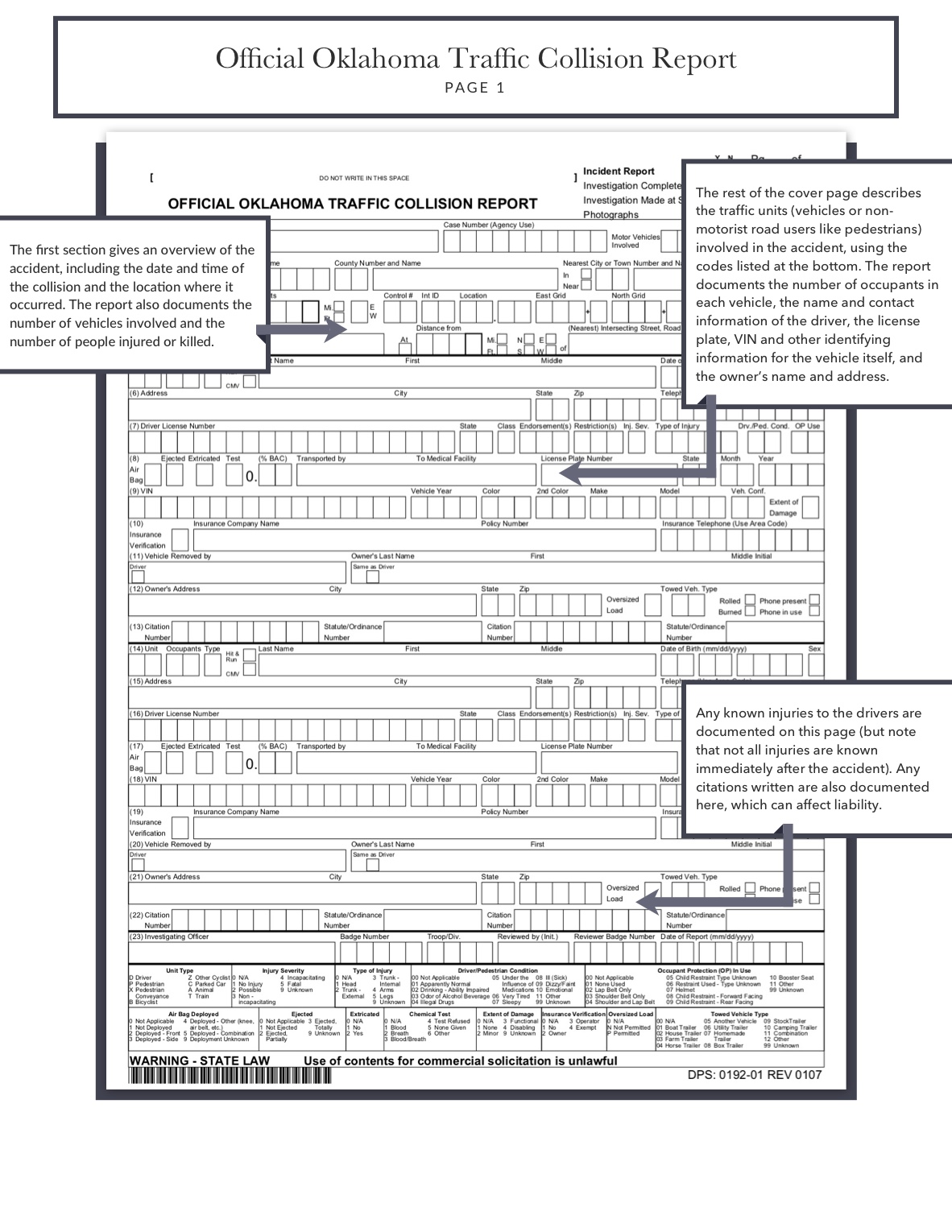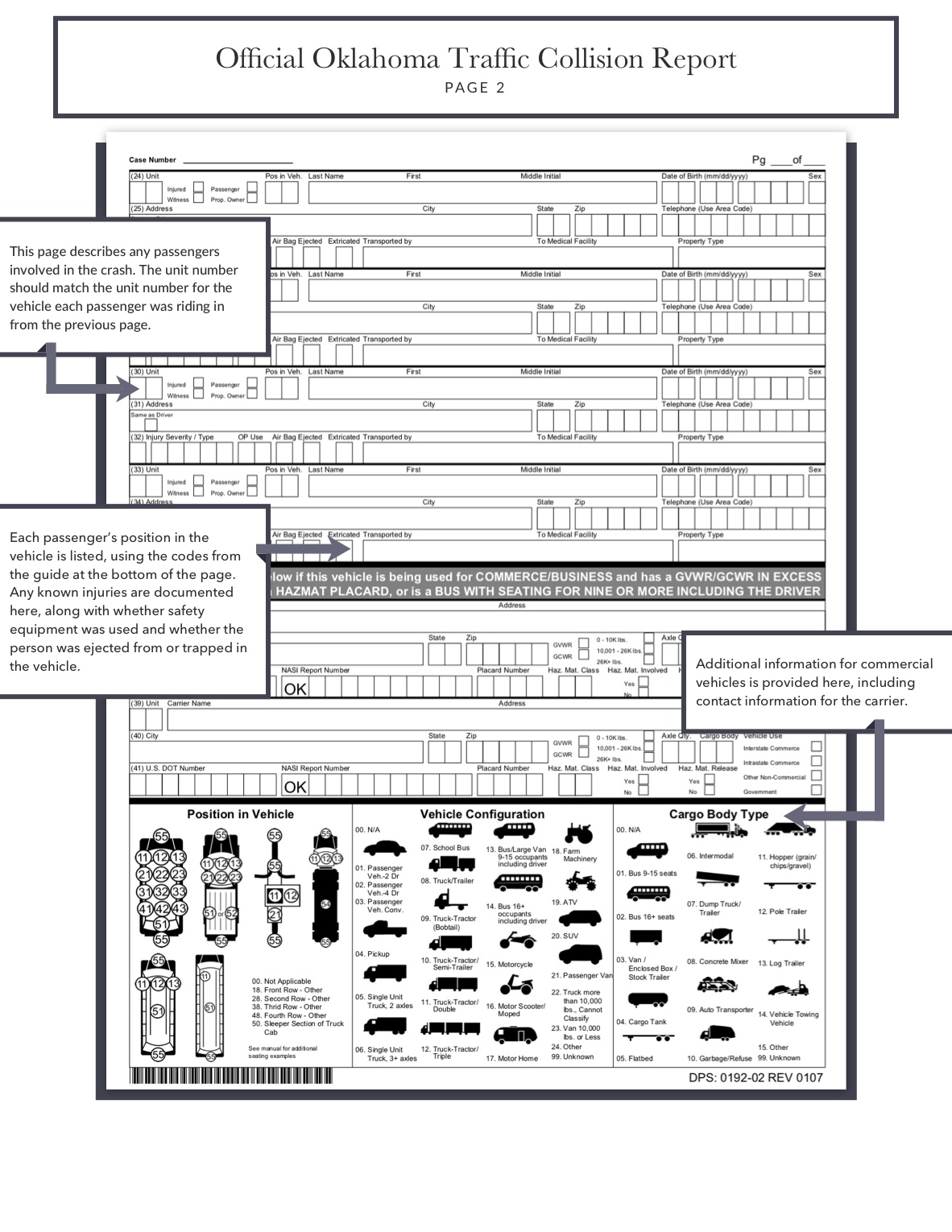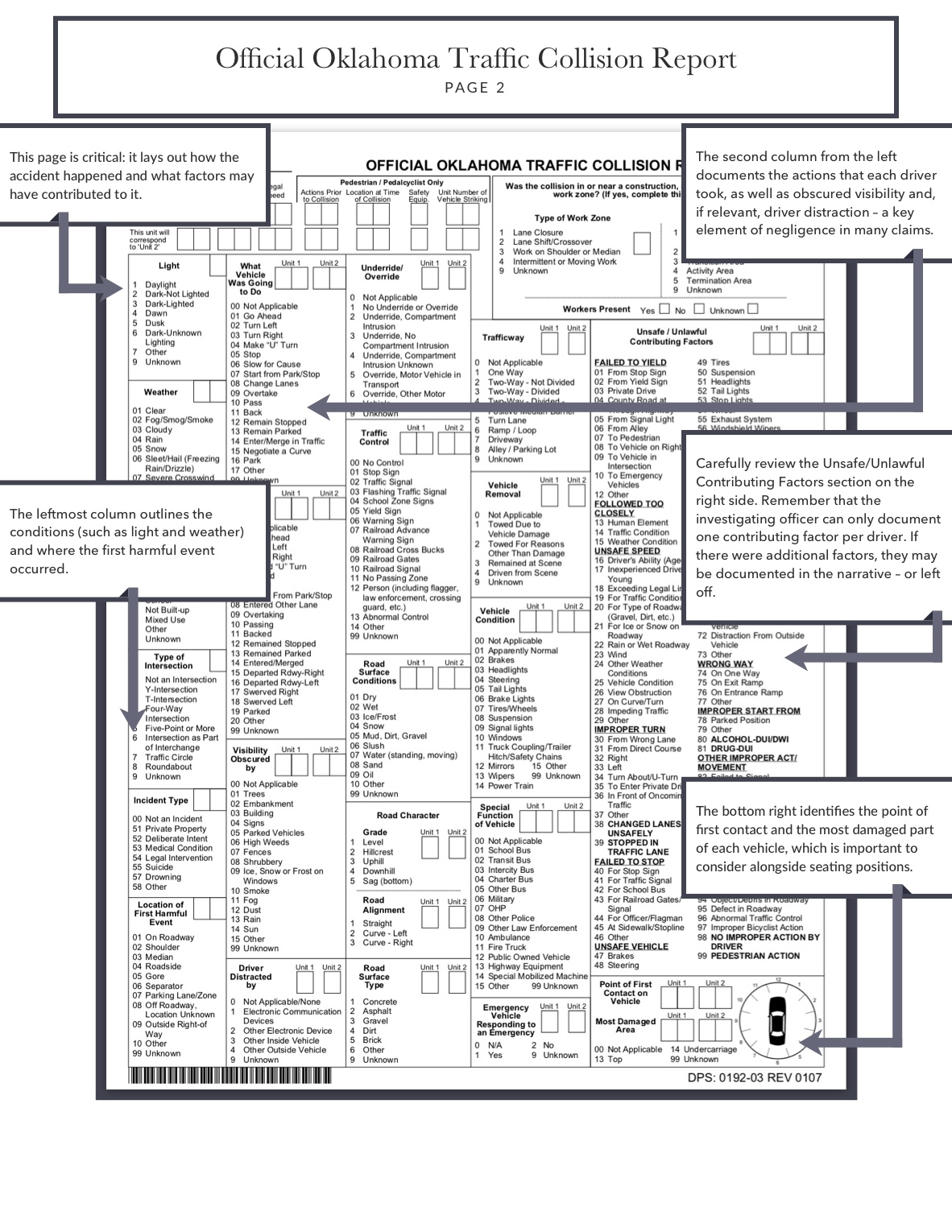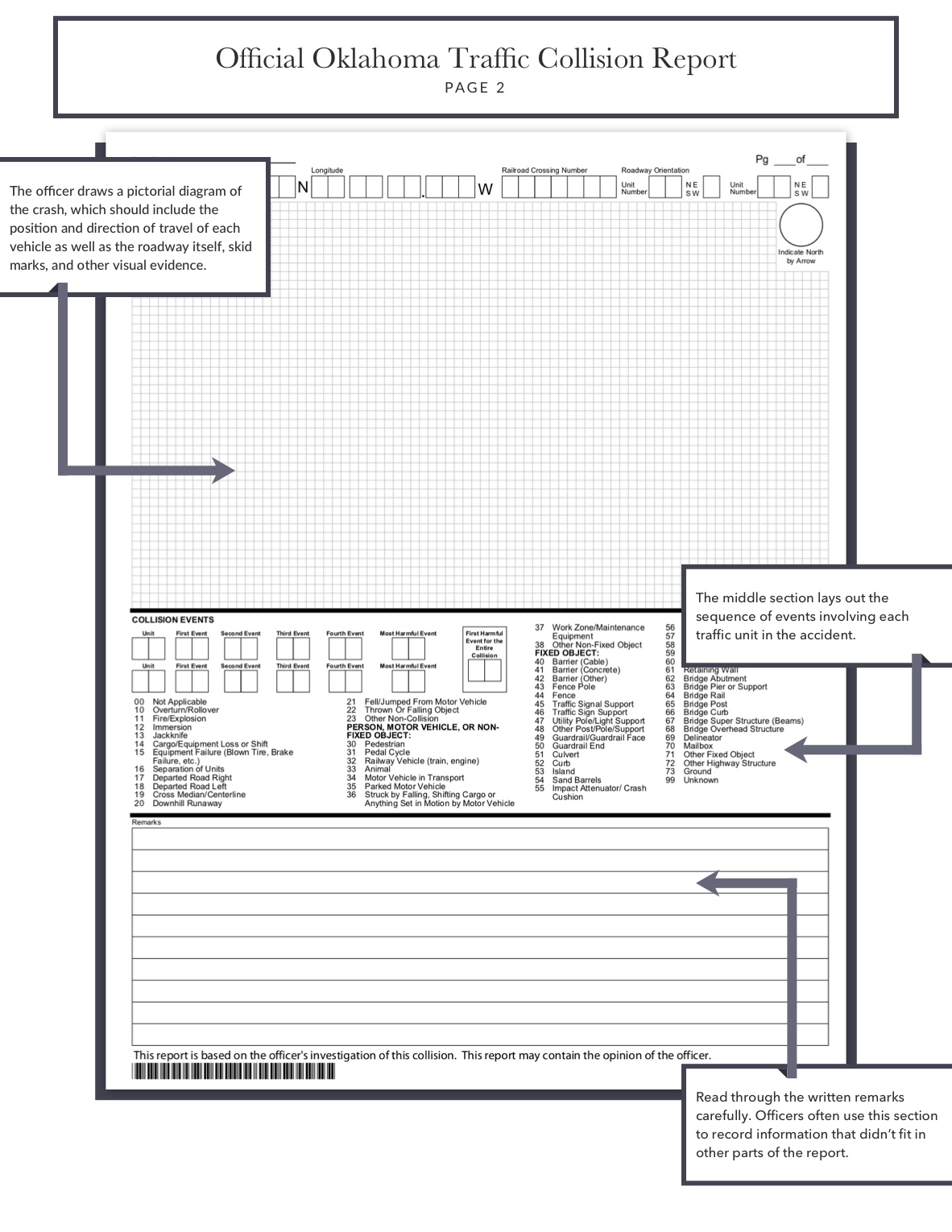In a divorce, the laws of equitable distribution distinguish marital property from separate property. Technically, only marital property, that is, proper...
When car accidents happen in Oklahoma, the police accident report (called an Official Oklahoma Traffic Collision Report) becomes a key piece of evidence in the ensuing claim and, if necessary, litigation. Insurance companies refer to the report when determining fault for the accident, and if the investigating police officer is called to testify at trial (which may be years later), they will likely refer to their report while testifying.
Reading your accident report is important to understand the outlook for your claims. Here’s what you need to know.
Official Oklahoma Traffic Collision Report
https://www.nhtsa.gov/sites/nhtsa.dot.gov/files/documents/ok_par_rev01_07_sub_08_16_06.pdf

Page 1
The first section gives an overview of the accident, including the date and time of the collision and the location where it occurred. The report also documents the number of vehicles involved and the number of people injured or killed.
Click here to download a printable PDF of Reading Your Oklahoma Car Accident Report.
The rest of the cover page describes the traffic units (vehicles or non-motorist road users like pedestrians) involved in the accident, using the codes listed at the bottom. The report documents the number of occupants in each vehicle, the name and contact information of the driver, the license plate, VIN and other identifying information for the vehicle itself, and the owner’s name and address.
Any known injuries to the drivers are documented on this page (but note that not all injuries are known immediately after the accident). Any citations written are also documented here, which can affect liability.

Page 2
This page describes any passengers involved in the crash. The unit number should match the unit number for the vehicle each passenger was riding in from the previous page.
Each passenger’s position in the vehicle is listed, using the codes from the guide at the bottom of the page. Any known injuries are documented here, along with whether safety equipment was used and whether the person was ejected from or trapped in the vehicle.
Additional information for commercial vehicles is provided here, including contact information for the carrier.

Page 3
This page is critical: it lays out how the accident happened and what factors may have contributed to it.
The leftmost column outlines the conditions (such as light and weather) and where the first harmful event occurred.
The second column from the left documents the actions that each driver took, as well as obscured visibility and, if relevant, driver distraction – a key element of negligence in many claims.
Carefully review the Unsafe/Unlawful Contributing Factors section on the right side.
Remember that the investigating officer can only document one contributing factor per driver. If there were additional factors, they may be documented in the narrative – or left off.
The bottom right identifies the point of first contact and the most damaged part of each vehicle, which is important to consider alongside seating positions.

Page 4
The officer draws a pictorial diagram of the crash, which should include the position and direction of travel of each vehicle as well as the roadway itself, skid marks, and other visual evidence.
The middle section lays out the sequence of events involving each traffic unit in the accident.
Read through the written remarks carefully. Officers often use this section to record information that didn’t fit in other parts of the report.





